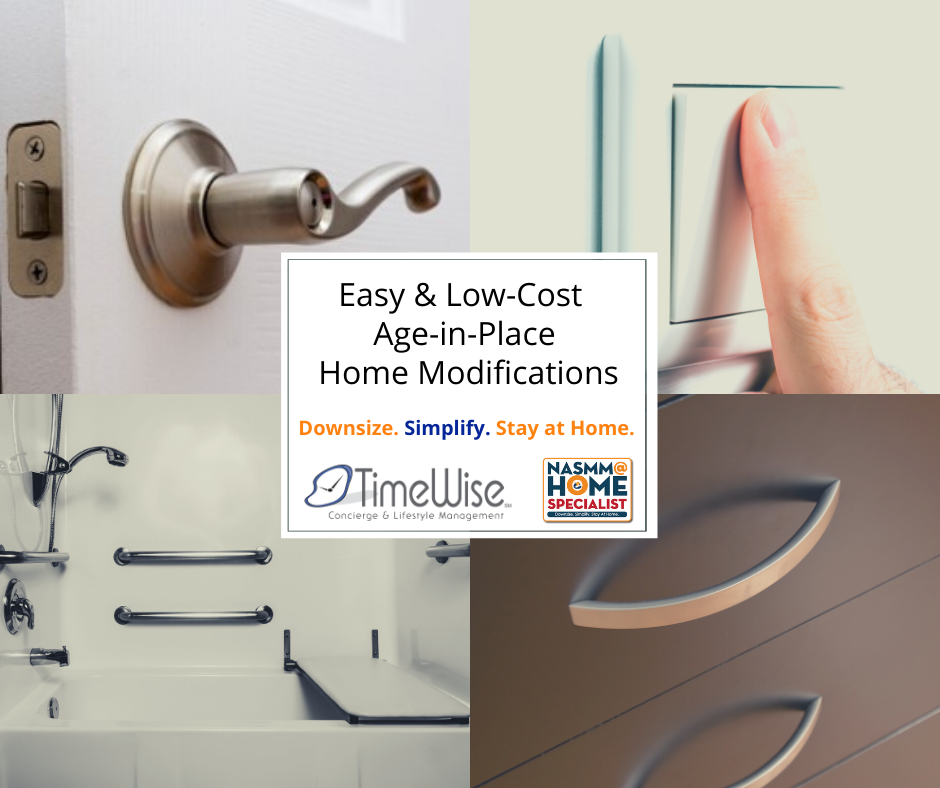 There is no place like home. As much as we wish to stay in our homes as we age, sometimes our homes no longer work for us as they did years ago. The good news is it may not mean you have to move. There are many easy low-cost modifications that can be made to your home to help make it a safer environment, and support services that can be put in place that will allow you to comfortably stay independent in your current home.
There is no place like home. As much as we wish to stay in our homes as we age, sometimes our homes no longer work for us as they did years ago. The good news is it may not mean you have to move. There are many easy low-cost modifications that can be made to your home to help make it a safer environment, and support services that can be put in place that will allow you to comfortably stay independent in your current home.
What exactly does it mean to age-in-place?
Aging in place means being able to live in the home of your choice for as long as you are able, while being able to get assistance you require as your needs change. To age-in-place does not always mean staying in your CURRENT home — it means staying in the right home. The options are wide open; the home you live in now could be modified to meet your current and future physical needs, or it may be best to find a new home that better fits your lifestyle needs.
We’re not always comfortable thinking of our future as we age, but when we plan ahead it can make the process a lot easier. My husband and I were in our mid-40’s when we bought our condo, and it was a must-have for me to have a downstairs bedroom. I wanted this home to serve us for as long as we wanted to stay here. Now the likelihood of us staying here for 30-40 years is not really in the cards, but due to my experience working with clients, it was important to me, ‘just in case’.
Whether you are in the ‘planning ahead’ stage, or are in a position requiring you to quickly make changes, when moving isn’t the best decision for you or an aging family member, here are some DIY low-cost modifications that can be done to make your home more user-friendly:
Whole House Solutions
- Lever door handles
- D or U-shaped drawer pulls
- LED Lighting
- Rocker switches
- Single-lever faucets
- Shower seats, hand-held shower
- Grab bars
- Touch lamps
- Lower closet rods
- Raised toilet seats/comfort-height toilets
- Ramps
- Clear the clutter — By far the lowest-cost solution that provides the biggest reward is decluttering and downsizing your belongings. I often see dining rooms so full of clutter that they are not functional for dining, never mind anything else. If this space were reimagined, maybe it could serve as a home office, eliminating the trek upstairs where your office has always been.

Easy Outdoor Solutions
- Benches
- Large house numbers
- Motion lighting
- Video doorbell/intercom
- Shelf next to door
- Garage Door Opener (Tip: Keep one nearby in a pocket to let visitors in the house)
- Lawn markers
Of course, there are some situations that cannot be solved with easy low-cost solutions, such as the lack of a bedroom on the first floor. Much more extensive solutions costing thousands of dollars would be installing a stair lift or renovating the downstairs to allow for a bedroom.
Whatever stage you may be in, consider seeking assistance to develop a plan that allows you to stay independent, in control, and in your home.
As a NASMM@HOME Specialist we can help you with some, or all, of these tasks:
- Define your vision, decide where to begin, and help prioritize what areas need work.
- Conduct a home safety assessment and a functional assessment to determine your unique needs.
- Repurpose your existing space so it works better for you NOW.
- Evaluate what you want in your home and help decide what will be donated, sold, or discarded.
- Explore home care maintenance concerns.
- Suggest possible home modifications and contractors.
- Recommend assistive technology solutions.
- Reduce home safety concerns and eliminate common in-home hazards.
- Identify in-home services to assist with maintaining your independence
Whether you’re planning for your own future or helping a family member, consider what your needs may be five, 10 or 20 years from now. Does your home fit you and your needs today, and is it likely to do so in the future? Is it time to downsize and simplify your life?
If you’d like to set up a complimentary, no-obligation consultation, contact us today.
